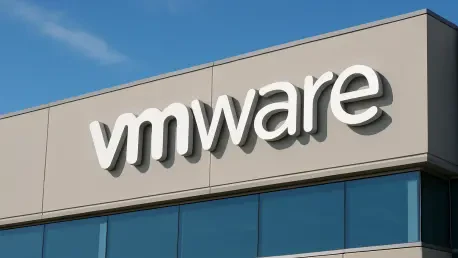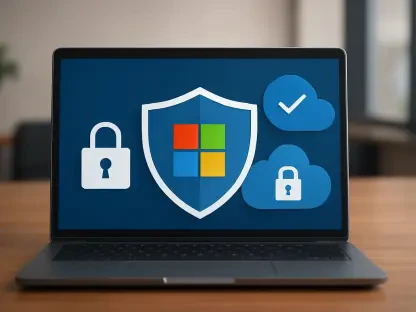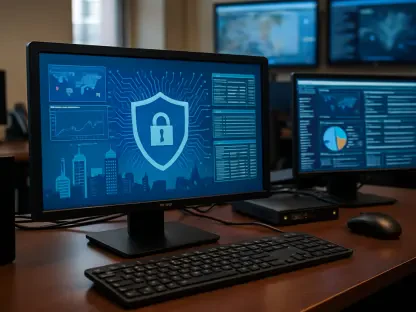Imagine a critical flaw in widely used software, silently exploited by state-sponsored actors for nearly a year, compromising virtual environments across industries, and remaining undetected until it was almost too late to respond effectively. This alarming reality came to light with the discovery of a severe vulnerability in VMware products, identified as CVE-2025-41244, targeted by Chinese state-backed hackers. The prolonged undetected breach has sparked urgent discussions among cybersecurity experts about detection gaps, software security, and the sophistication of modern cyber threats. This roundup gathers insights, opinions, and actionable tips from various industry voices to unpack the implications of this exploit, compare perspectives on its severity, and offer guidance for organizations navigating an increasingly vulnerable digital landscape.
Exploring the Depth of the VMware Flaw: Diverse Perspectives
Timeline of Exploitation: How Long Did It Linger?
The timeline of the VMware vulnerability exploitation has stunned many in the cybersecurity community. Reports indicate that the flaw, CVE-2025-41244, was leveraged by a Chinese state-sponsored group known as UNC5174 since at least mid-October of the prior year, marking a dwell time of almost 12 months before detection. Many experts express concern over how such a prolonged breach evaded notice, pointing to systemic weaknesses in monitoring tools currently deployed across enterprises.
Another angle comes from incident response specialists who suggest that the stealth of this attack highlights a growing trend of adversaries prioritizing low-profile tactics. They argue that the year-long exploitation window reflects not just technical oversight but also a lack of proactive threat hunting in many organizations. This perspective urges a shift in mindset toward continuous vigilance rather than reactive patching.
A contrasting view from software security analysts emphasizes that the duration of exploitation might be even longer than documented. Given the open-source nature of components like VMware Tools, some believe other malicious actors could have accessed the flaw unnoticed, potentially extending the timeline of risk. This uncertainty fuels debates on how to quantify the true scope of such hidden threats.
Technical Simplicity: Why Was It So Easy to Exploit?
Diving into the mechanics of CVE-2025-41244, numerous technical experts have noted the surprising simplicity of the privilege escalation flaw within VMware Tools’ service discovery feature. This functionality inadvertently allowed non-system binaries, including malicious ones, to gain elevated access, creating a straightforward path for attackers. Many in the field describe this as a design oversight that drastically lowered the barrier for exploitation.
Some cybersecurity researchers highlight the real-world implications of this simplicity, noting that even naming a binary in a specific way could trigger the exploit. This ease of access raises alarms about the potential for widespread impact across industries relying on virtualized environments. The consensus here is that such flaws can be weaponized not only by sophisticated groups but also by less-skilled malicious actors or even accidental malware.
A differing opinion from vulnerability management professionals suggests that while the exploit’s simplicity is concerning, the focus should be on why such basic errors persist in critical software. They argue that this incident points to a broader issue of insufficient security testing during development cycles, calling for stricter standards in software design to prevent similar vulnerabilities from emerging in commonly used platforms.
State-Sponsored Involvement: Intent or Accident?
The role of UNC5174, identified as a Chinese state-sponsored threat actor, has sparked varied interpretations regarding the intent behind exploiting this VMware flaw. Many geopolitical cybersecurity analysts believe the targeting was deliberate, aligning with patterns of state-backed groups focusing on critical infrastructure for espionage or strategic advantage. This view positions the exploit as part of a larger cyber warfare strategy.
On the other hand, a segment of threat intelligence experts questions whether the exploitation was intentional or a fortunate stumble by the attackers. They point out that the flaw’s accessibility in open-source components like VMware Tools could mean other entities exploited it unknowingly as well. This uncertainty complicates the narrative around attributing motive and assessing the full extent of state involvement.
A third perspective from global security consultants emphasizes that intent might be irrelevant when the damage is already done. They argue that the focus should shift toward understanding how such vulnerabilities become entry points for advanced persistent threats, regardless of whether the exploitation was planned. This pragmatic stance prioritizes mitigation over speculation, urging organizations to address root causes rather than dwell on attribution.
Industry Response: How Did Stakeholders React?
The response to the discovery of CVE-2025-41244 has drawn mixed reactions regarding the actions of Broadcom, VMware’s parent company, and the cybersecurity firm that identified the issue. Many praise the coordinated responsible disclosure process, which led to patches being released on September 29 for this flaw and related vulnerabilities. Industry observers note that such collaboration between vendors and researchers is essential for timely remediation.
However, some cybersecurity advocates criticize the lack of transparency in Broadcom’s advisory, which rated the flaw as “high” severity with a CVSS score of 7.8 but omitted details about prior exploitation. This silence has led to concerns about whether affected organizations received adequate warning to prioritize updates. Critics argue that clearer communication could have accelerated protective measures across impacted systems.
A balanced viewpoint from software compliance experts acknowledges the challenges vendors face in balancing disclosure with risk. They suggest that while transparency is ideal, the embargo and patch release reflect a commitment to user safety. Still, they recommend that future advisories include more context about exploitation history to build trust and ensure informed decision-making among IT teams.
Key Takeaways and Tips from the Cybersecurity Community
Drawing from multiple sources, several critical insights emerge about the VMware exploit saga. The nearly year-long undetected exploitation by UNC5174 underscores a pressing need for enhanced detection capabilities, with experts recommending investment in advanced threat hunting tools to identify anomalies early. Additionally, the simplicity of the flaw serves as a reminder that even minor oversights in software can have catastrophic consequences, prompting calls for rigorous security audits during development.
Practical tips for organizations include immediately applying Broadcom’s patches to mitigate CVE-2025-41244 and related flaws. IT teams are advised to monitor processes for suspicious activity, as exploitation often leaves detectable traces, even if it indicates prior system compromise. Collaborating with cybersecurity professionals to conduct thorough audits of VMware environments is also suggested to uncover potential lingering risks.
Another actionable piece of advice focuses on long-term resilience. Many experts stress the importance of fostering a culture of proactive security within organizations, including regular training for staff on emerging threats and maintaining updated incident response plans. This holistic approach aims to reduce dwell times for future vulnerabilities and strengthen defenses against sophisticated adversaries.
Reflecting on a Critical Cyber Incident: Next Steps
Looking back, the revelation of the VMware vulnerability CVE-2025-41244 and its exploitation by Chinese state-sponsored actors like UNC5174 exposed significant gaps in cybersecurity preparedness. The incident underscored how even widely trusted platforms could harbor flaws that remained undetected for months, causing widespread concern among industries reliant on virtualized systems. It also highlighted the nuanced challenges of balancing transparency with timely remediation in vendor responses.
Moving forward, organizations must prioritize not only the immediate application of patches but also a deeper commitment to software security practices. Exploring partnerships with threat intelligence networks can provide early warnings of similar exploits, while investing in cutting-edge monitoring solutions offers a proactive defense against stealthy attacks. As cyber threats continue to evolve, adopting a mindset of constant adaptation and collaboration will be essential to safeguard critical infrastructure from unseen vulnerabilities.









